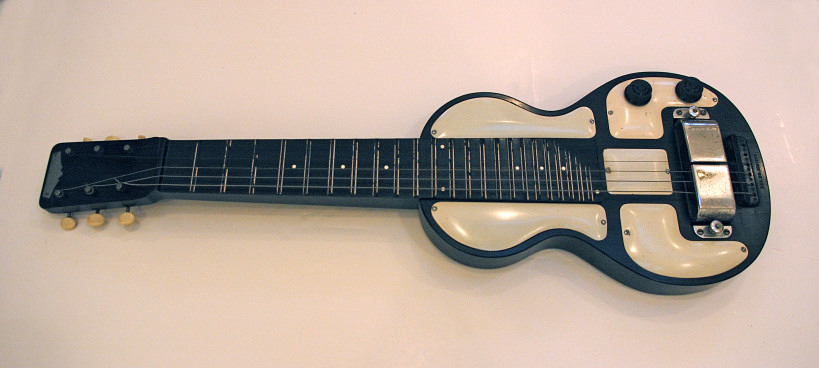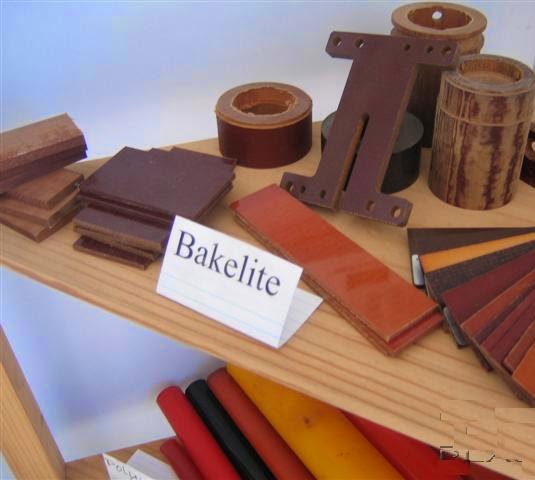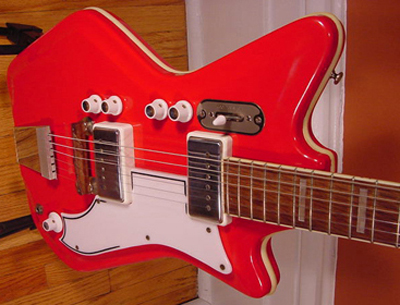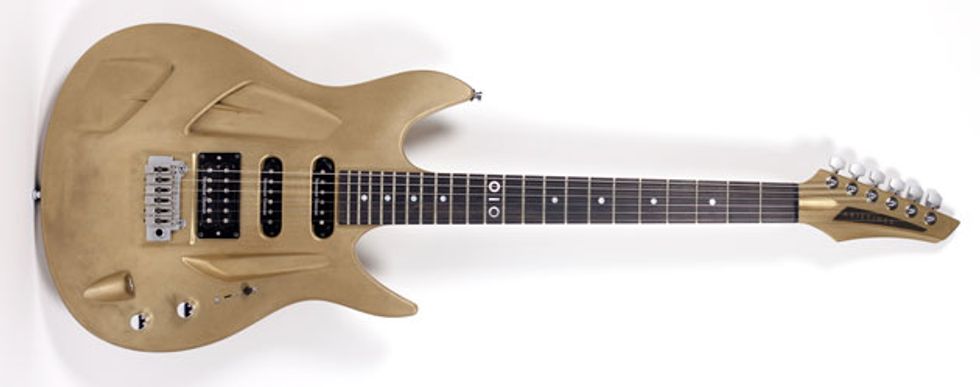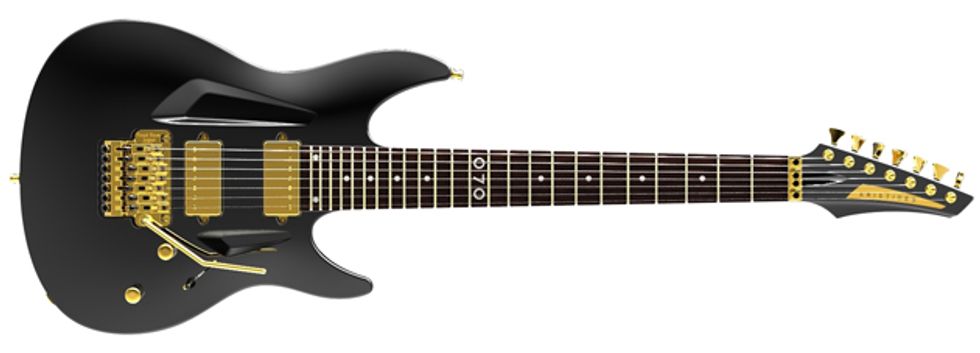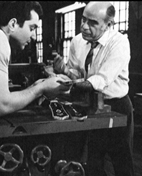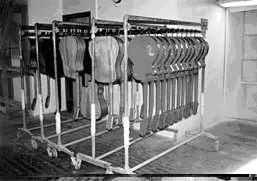The first electric guitar to be made of a composite material was the Rickenbacker Electro Spanish Model B, which was first offered in 1935.
The “B” for this Ric was for Bakelite that formed its shape. Bakelite was a substance developed in 1907 and it is an early form of plastic also known as athermosetting phenol formaldehyde resin. Whatever that means!?
Actually Bakelite it is formed from the chemical elimination of mixing phenol and formaldehyde.
My knowledge of chemistry is limited, but I recall the use of phenol in surgery years ago. It is a very caustic chemical and the only way to stop its burning action is to pour alcohol on it. It was used to make all sorts of plastic objects since it was easy to mold.
Old pool balls were made of Bakelite. But I digress.
The Valco Company was started sometime in the 1930’s when Victor Smith, Al Frost and Louis Dopyear (owner of National Guitars) started a new company.
It wasn’t until 1961 that they began building fiberglass body guitars. At first they were called Map Guitars, since they resembled a map of the United States, at least the way it existed before 1961.
These guitars began showing up in catalogs in 1962 and by 1964 there was a line of different models; all with bodies made of reso-glass aka fiberglass. The guitars necks were still made of wood and bolted on to the bodies. Some showed up as Nationals, and some were branded as Airline guitars.
Of course, those of you paying attention to this blog you would know that around 1966 Charles Kaman began studying a way to make a more efficient guitar and in the process founded the Ovation Guitar Company and their patented Lyrachord bowl backs. These were offered to the public a year later and extensively promoted by guitarist Glen Campbell.
 |
| Aristides Poort |
Technical University Delft in the Netherlands to develop a composite that had similar properties of wood and could emulate wood. His research studied the finest tonal woods of differing types to achieve a grasp of their cell structure.
Once this was established it was then possible to design a material that would possess a cell structure similar to wood that could mimic the resonance and sustain of wood.
Fifteen years later the research led to a tone material that possessed amazing acoustic qualities. This made it possible to build an instrument of one piece construction out of a man made composite material which simulated the quality of superior tone wood.
This would be a material in which sound waves could resonate without disruption. This material was given the name Arium
 |
| The above chart is from the Aristides Guitar website |
 |
| Aristides Factory Lab |
 |
| Aristides Factory |
Although these guitars are available throughout Europe and Asia, there is only one dealer in the United States which is the Custom Guitar Boutique in New York City.
The Aristides Guitar and Bass are available in four versions. The Aristides 010 comes with two single coil pickups in the neck and center position and a humbucker in the bridge position. All pickups are made in the USA by Seymour Duncan.
The body and neck are of one piece construction. The neck is capped with an ebony fretboard topped with 22 medium jumbo frets. The scale is 25.5”.
There is a five way blade switch. A master volume control is push-pull. The bridge and tailpiece are designed by Wilkinson and made by Gotoh.
The guitar is topped with Schaller locking tuners on the six-on-a-side head stock. The body has a very unique shape. 010 is inlaid on the twelfth fret.
The Aristides 010 comes with a leather case, and a leather strap with the Aristides logo.
This model has a scannable microchip embedded in the body. The 010 is available in red, black, white, gold, metallic blue and aluminum finishes. By special order a customer could get Rising Sun Red, or twin EMG humbucking
pickups.
The 020 comes with twin Seymour Duncan humbucking pickups and similar features that are found on the prior model. The nuts on Aristides guitars are made of Black Tusq. The scale on this model is slightly shorter at 24.9”.
The machine heads are Hipshot Griplock tuners. 020 is inlaid on the twelfth fret. Pearl inlay are used as fret markers. The headstock is six on a side. This model comes with a SKB case and a leather strap with the Aristides logo.
The 020 comes with two special features. One is a magnetic removable truss rod cover. How cool is that?
The other is the microchip embedded in the body that is scannable. The 020 is available in White with gold or chrome hardware; Black with gold or chrome hardware or by special with a Deep Ruby Marble or Dark Grey Sapphire Marble with chrome hardware. This guitar has three on a side tuners.
The body on this model features cutaways that are more congruent.
The 050 models are Aristides bass guitars. They are offered with aluminum, matt black or blue metallic finishes. Once again, the body and neck are one piece. The fretboard on these basses is first grade rosewood. The nut is by Graph Tech.
The fretboard is topped with 20 Jescar frets and has a 12” radius for comfort. The machine heads are made by Hipshot. The scale is 34”.
It weighs slightly over nine pounds. The body is topped by twin Seymour Duncan Quarter Pounders. The aluminum bridge is made by ABM. There are two push-pull volume controls for slap contour and true bypass.
The twin tone controls are actually twin active band EQ controls. This guitar also comes with a microchip embedded in the body. 050 is inlaid on the twelfth fret. These are all five string bass guitars.
The 070 series are comprised of seven string guitars that are available in black, white or with passive electronics. This guitar is also available in Dutch orange with passive or active electronics. These have Hipshot Hardtail bridges and saddles. The nut is a black Tusq custom model. This guitar has a scale of 26 ½”. The neck radius is 12”.
There are 24 frets on an ebony fretboard. There are twin Seymour Duncan humbucking pickups with a 5-way switch to give maximum pickup combinations. The body has a unique shape and once again, a microchip is embedded in the guitar. The six on side tuners are made by Hipshot. It has one master volume and one master tone potentiometer.
The 070 guitar is also available with active electronics made by MEC. It features similar accoutrements as found on the passive guitars.
However the active model includes twin Seymour Duncan Blackout (Phase 1) pickups, a master audio pot and a master tone audio pot. The pickups are controlled by a three-way switch.
These models come with a Floyd Rose Tremolo bridge and Floyd Rose locking nut. The tuners are made by Hipshot and are locking. 070 is inlaid at the twelfth fret.
The 070 Aristides guitar is also available in deluxe appointments with white with gold finished hardware. This model has twin EMG 81/60 pickups and pearl inlays on the ebony fretboard.
The Aristides are gorgeous and unique guitars. Of course one of the best thing about this guitars design is the built in microchip that is embedded in the Arium in the body’s center. If the guitar is stolen or lost, it can be detected by scanning this microchip. Let’s hope other companies pick up on this technology.
The other nice thing about Aristides Guitars is the lack of a neck heel. Because the body and the neck are molded at the same time, there is no need for a heel.
